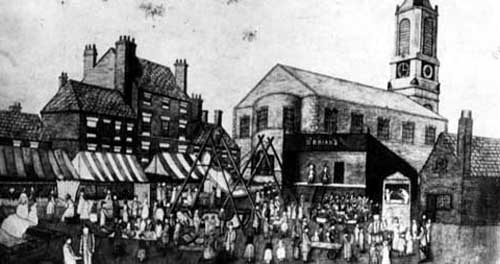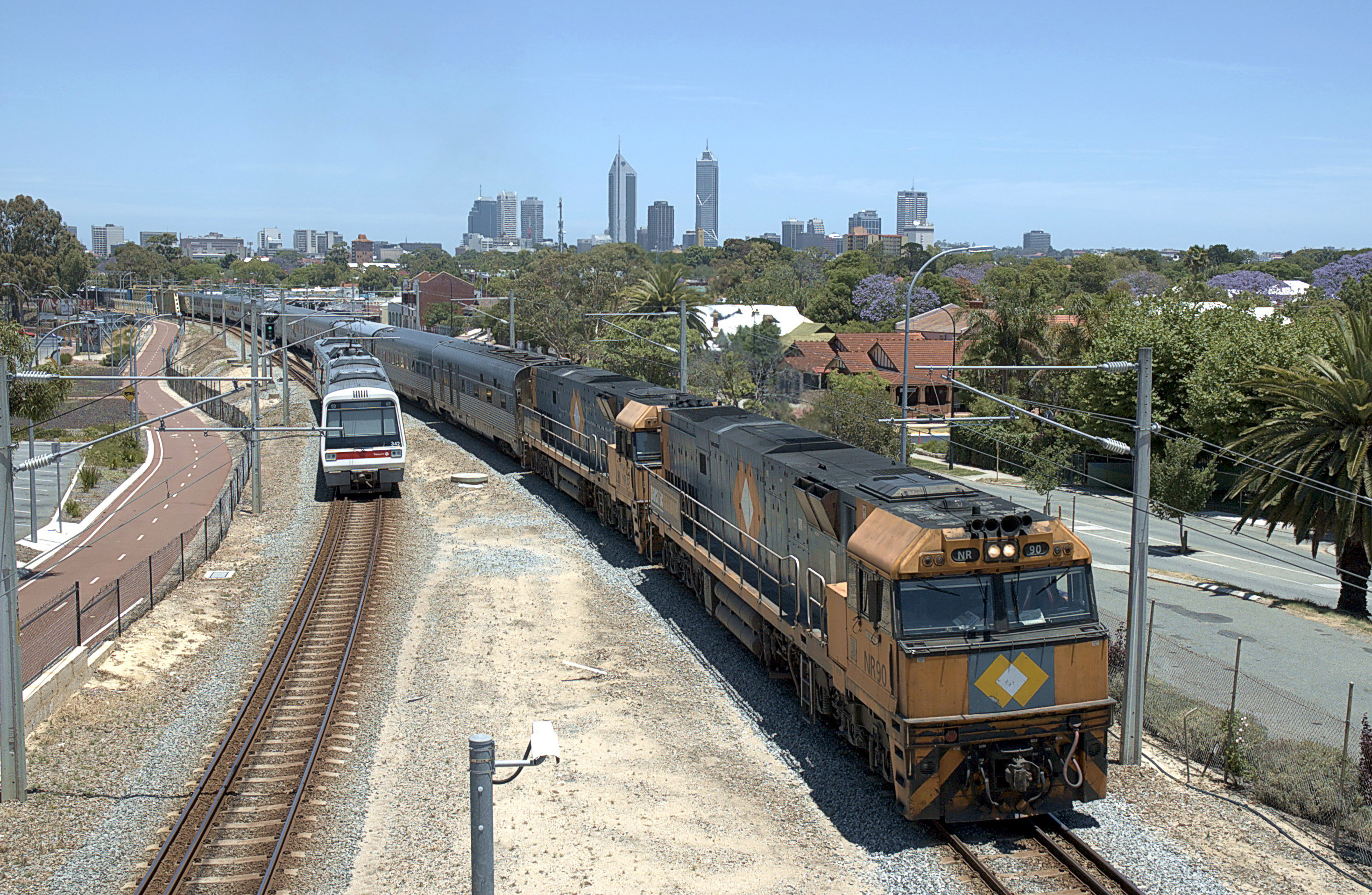|
WAGR D Class (1884)
The WAGR D class was a single member class of 0-4-0ST tank locomotive operated by the Western Australian Government Railways (WAGR) from 1884 until 1903. History The D class locomotive was built in 1884 by Hunslet Engine Company, Leeds. It entered service on 1 March 1884 as a jetty shunter on the Fremantle Long Jetty. When engine class designations were introduced in 1885, it was numbered D6. Upon the opening of Fremantle's inner harbour in 1897, the long jetty ceased to be used, and the locomotive became surplus to requirements. It was sold in September 1903 for use on the 2.5 mile Leonora tramway. Following the electrification of that tramway in 1908, it was sold to Bunning Brothers, reboilered, had its saddle tank removed and a tender built hauled timber hauling times trains at Lyall Mill, Argyle, Muja and Tullis until withdrawn in 1951 and scrapped in 1956. Namesakes The D class designation was reused for the D class locomotives from 1912 and again in the 1970s when ... [...More Info...] [...Related Items...] OR: [Wikipedia] [Google] [Baidu] |
Hunslet Engine Company
The Hunslet Engine Company is a locomotive-building company, founded in 1864 in Hunslet, England. It manufactured steam locomotives for over 100 years and currently manufactures diesel shunting locomotives. The company is part of Ed Murray & Sons. History The early years 1864–1901 The company was founded in 1864 at Jack Lane in Hunslet by John Towlerton Leather, a civil engineering contractor, who appointed James Campbell (son of Alexander Campbell, a Leeds engineer) as his works manager. The first engine was completed in 1865. It was ''Linden'', a standard gauge delivered to Brassey and Ballard, a railway civil engineering contractor as were several of the firm's early customers. Other customers included collieries. This basic standard gauge shunting and short haul "industrial" engine was to be the main-stay of Hunslet production for many years. In 1871, James Campbell bought the company for £25,000 (payable in five instalments over two years) and the firm remained ... [...More Info...] [...Related Items...] OR: [Wikipedia] [Google] [Baidu] |
WAGR D Class (diesel)
The D/DA class are a class of diesel locomotives built by Clyde Engineering, Granville for the Western Australian Government Railways in 1971-1972. History Five D class were ordered by the Western Australian Government Railways to haul bauxite services. These were followed by seven DA class locomotives. These differed in not having dynamic brakes and were 12 tonnes lighter. In August 1998, D1564-65 were sold to Tranz Rail and rebuilt with new cabs at Hutt Workshops before being sent to TasRail in June 2001 entering service as 2020-21. The new cabs resembled the cab that was fitted to DXR8007 at the time. In September 1998, D1563 was exported to Chile, where it would be overhauled and operated by the Ferrocarril de Antofagasta a Bolivia. The remaining nine locomotives were included in the sale of Westrail to Australian Railroad Group in October 2000. When this was split in June 2006, DA 1577 was transferred to Genesee & Wyoming Australia with the South Australian business with ... [...More Info...] [...Related Items...] OR: [Wikipedia] [Google] [Baidu] |
Steam Locomotives Of Western Australia
Steam is a substance containing water in the gas phase, and sometimes also an aerosol of liquid water droplets, or air. This may occur due to evaporation or due to boiling, where heat is applied until water reaches the enthalpy of vaporization. Steam that is saturated or superheated is invisible; however, "steam" often refers to wet steam, the visible mist or aerosol of water droplets formed as water vapor condenses. Water increases in volume by 1,700 times at standard temperature and pressure; this change in volume can be converted into mechanical work by steam engines such as reciprocating piston type engines and steam turbines, which are a sub-group of steam engines. Piston type steam engines played a central role in the Industrial Revolution and modern steam turbines are used to generate more than 80% of the world's electricity. If liquid water comes in contact with a very hot surface or depressurizes quickly below its vapor pressure, it can create a steam explosion. Types ... [...More Info...] [...Related Items...] OR: [Wikipedia] [Google] [Baidu] |
Railway Locomotives Introduced In 1884
Rail transport (also known as train transport) is a means of transport that transfers passengers and goods on wheeled vehicles running on rails, which are incorporated in tracks. In contrast to road transport, where the vehicles run on a prepared flat surface, rail vehicles (rolling stock) are directionally guided by the tracks on which they run. Tracks usually consist of steel rails, installed on sleepers (ties) set in ballast, on which the rolling stock, usually fitted with metal wheels, moves. Other variations are also possible, such as "slab track", in which the rails are fastened to a concrete foundation resting on a prepared subsurface. Rolling stock in a rail transport system generally encounters lower frictional resistance than rubber-tyred road vehicles, so passenger and freight cars (carriages and wagons) can be coupled into longer trains. The operation is carried out by a railway company, providing transport between train stations or freight customer facili ... [...More Info...] [...Related Items...] OR: [Wikipedia] [Google] [Baidu] |
Hunslet Locomotives
Hunslet () is an inner-city area in south Leeds, West Yorkshire, England. It is southeast of the city centre and has an industrial past. It is situated in the Hunslet and Riverside ward of Leeds City Council and Leeds Central parliamentary constituency. The population of the previous City and Hunslet council ward at the 2011 census was 33,705. Many engineering companies were based in Hunslet, including John Fowler & Co. manufacturers of traction engines and steam rollers, the Hunslet Engine Company builders of locomotives (including those used during the construction of the Channel Tunnel), Kitson & Co., Manning Wardle and Hudswell Clarke. Many railway locomotives were built in the Jack Lane area of Hunslet. The area has a mixture of modern and 19th century industrial buildings, terraced housing and 20th century housing. It is an area that has grown up significantly around the River Aire in the early years of the 21st century, especially with the construction of modern r ... [...More Info...] [...Related Items...] OR: [Wikipedia] [Google] [Baidu] |
List Of Western Australian Locomotive Classes
This is a list of Western Australian locomotive classes, being classes of locomotive that have worked on railways in Western Australia. The majority of Western Australian steam locomotive classes were operated by the Western Australian Government Railways (WAGR). Regularly scheduled steam working ceased on WAGR mainline operations after 1971 - with only special excursion or enthusiasts trains being hauled by steam after that time. Other significant operators include the Commonwealth Railways, the Midland Railway Company of Western Australia and State Saw Mills. Many private organisations also operated steam locomotives in Western Australia. Locomotives Western Australian Government Railway Midland Railway Company of Western Australia (In order of introduction on the Midland railway.) Commonwealth Railways Other Diesel locomotives BHP (In order of introduction on the Goldsworthy and Mount Newman railways.) * CM39-8 * CM40-8M * CM40-8 * GE AC6000CW * EMD S ... [...More Info...] [...Related Items...] OR: [Wikipedia] [Google] [Baidu] |
History Of Rail Transport In Western Australia
Railways in Western Australia were developed in the 19th century both by the Government of Western Australia and a number of private companies. Today passenger rail services are controlled by the Public Transport Authority (a department of the Government of Western Australia) through Transperth, which operates public transport in Perth, and Transwa, which operates country passenger services. Great Southern Rail operates the ''Indian Pacific''. The interstate standard gauge line east from Kalgoorlie is owned by the Australian Rail Track Corporation, with most other lines leased by the state to Arc Infrastructure. Freight rail was privatised in 2000. General intrastate freight is mainly operated by Aurizon, while grain traffic is also operated by Aurizon under contract to the CBH Group. Interstate traffic is operated by Pacific National and SCT Logistics. Aurizon also operate an interstate mineral sands service to Kwinana from Broken Hill for Tronox. A number of private iron or ... [...More Info...] [...Related Items...] OR: [Wikipedia] [Google] [Baidu] |
0-4-0ST
Under the Whyte notation for the classification of steam locomotives, represents one of the simplest possible types, that with two axles and four coupled wheels, all of which are driven. The wheels on the earliest four-coupled locomotives were connected by a single gear wheel, but from 1825 the wheels were usually connected with coupling rods to form a single driven set. The notation 0-4-0T indicates a tank locomotive of this wheel arrangement on which its water and fuel is carried on board the engine itself, rather than in an attached tender. In Britain, the Whyte notation of wheel arrangement was also often used for the classification of electric and diesel-electric locomotives with side-rod-coupled driving wheels. Under the UIC classification used in Europe and, in more recent years, in simplified form in the United States, a 0-4-0 is classified as B (German and Italian) if the axles are connected by side rods or gearing and 020 (French), independent of axle motoring. The U ... [...More Info...] [...Related Items...] OR: [Wikipedia] [Google] [Baidu] |
Bunnings Warehouse
Bunnings Group Limited, trading as Bunnings Warehouse or Bunnings, is an Australian household hardware chain. The chain has been owned by Wesfarmers since 1994, and has stores in Australia and New Zealand. Bunnings was founded in Perth, Western Australia in 1886, by two brothers who had emigrated from England. Initially, a limited company focused on sawmilling, it became a public company in 1952 and subsequently expanded into the retail sector, purchasing several hardware stores. Bunnings began to expand into other states in the 1990s and opened its first warehouse-style store in Melbourne in 1994. As of 2020, the chain has 375 stores and over 30,000 employees. Bunnings has a market share of around 50 percent in the Australian Do-It-Yourself hardware market, with competing chains including Mitre 10, Home Hardware and various independent retailers such as Agora Marketplace and Total Tools around Australia. Bunnings runs community events outside or in its stores, including saus ... [...More Info...] [...Related Items...] OR: [Wikipedia] [Google] [Baidu] |
Leonora, Western Australia
Leonora is a town in the Goldfields-Esperance region of Western Australia, located northeast of the state capital, Perth, and north of the city of Kalgoorlie. History The first European explorer to visit the area was John Forrest in 1869. On 21 June 1869 Forrest's party made camp near a conspicuous hill, which Forrest named Mount Leonora, after his six-year-old niece Frances (Fanny) Leonora Hardey. In 1895, gold was discovered in the area by prospector Edward "Doodah" Sullivan at the Johannesburg lease just north of the current townsite. In the following two years a number of rich finds resulted in rapid development of the area. The Sons of Gwalia gold mine brought Leonora to the attention of the world. By 1897 a residential and business area had been established, and the town was gazetted as Leonora. Leonora had a single track passenger tramway linking the town and nearby Gwalia, from 1901 to 1921. Initially steam driven, the service was electric from November 1908, an ... [...More Info...] [...Related Items...] OR: [Wikipedia] [Google] [Baidu] |






